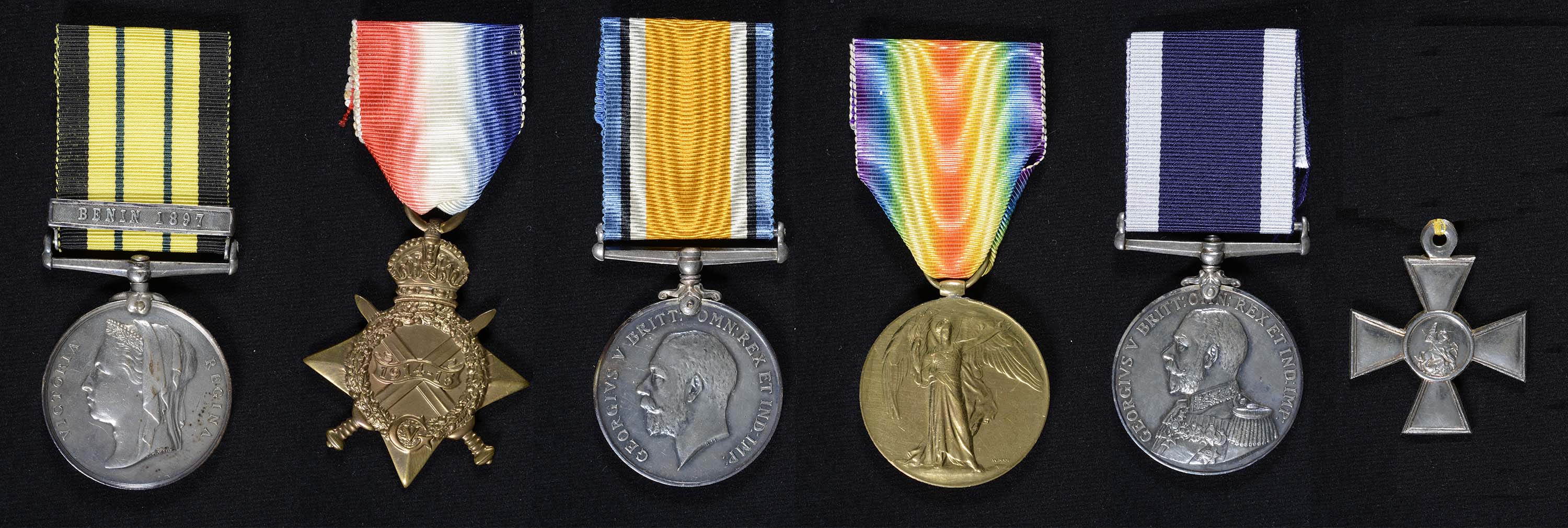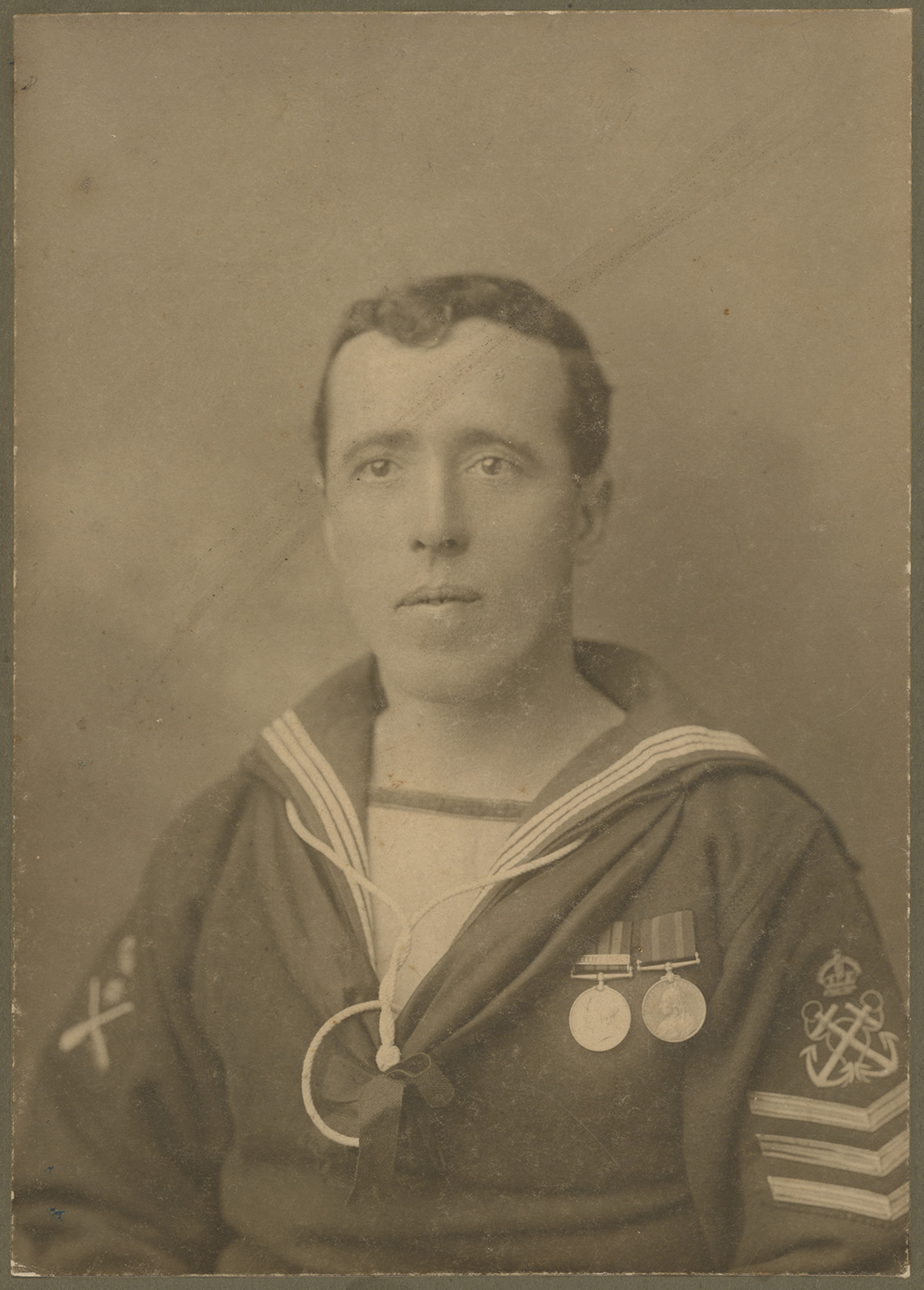

Display No. 1L
MCINNES, Allan
Allan McInnes joined the Royal Navy as a Boy 2nd Class in December 1893, training in HMS Impregnable. He served in many Royal Navy ships and shore establishments in the seaman branch. He served in HMS St George during the bombardment of the Sultan of Zanzibar’s Palace in 1896. In 1906 he was posted to the China station in HMS Monmouth.
At the outbreak of the First World War, McInnes was serving in HMS New Zealand and was present at the the battles of Heligoland Bight, Dogger Bank, and Jutland. For his service in the Battle of Jutland he was awarded the order of St George 4th Class by the Imperial Russian Government.
After retiring from the Royal Navy in 1918 he immigrated to New Zealand.
Note: The medals here are displayed in the order in which they were donated to the museum, representing how they were worn by the recipient. In this case, McInnes’ East and West Africa Medal with Benin 1897 clasp is mounted on an incorrect ribbon. The ribbon attached appears to be from the very similar Africa General Service Medal which has two thin central green stripes instead of black stripes.
Awarded medal(s)
Medal Description [Left to Right]:
East and West Africa Medal
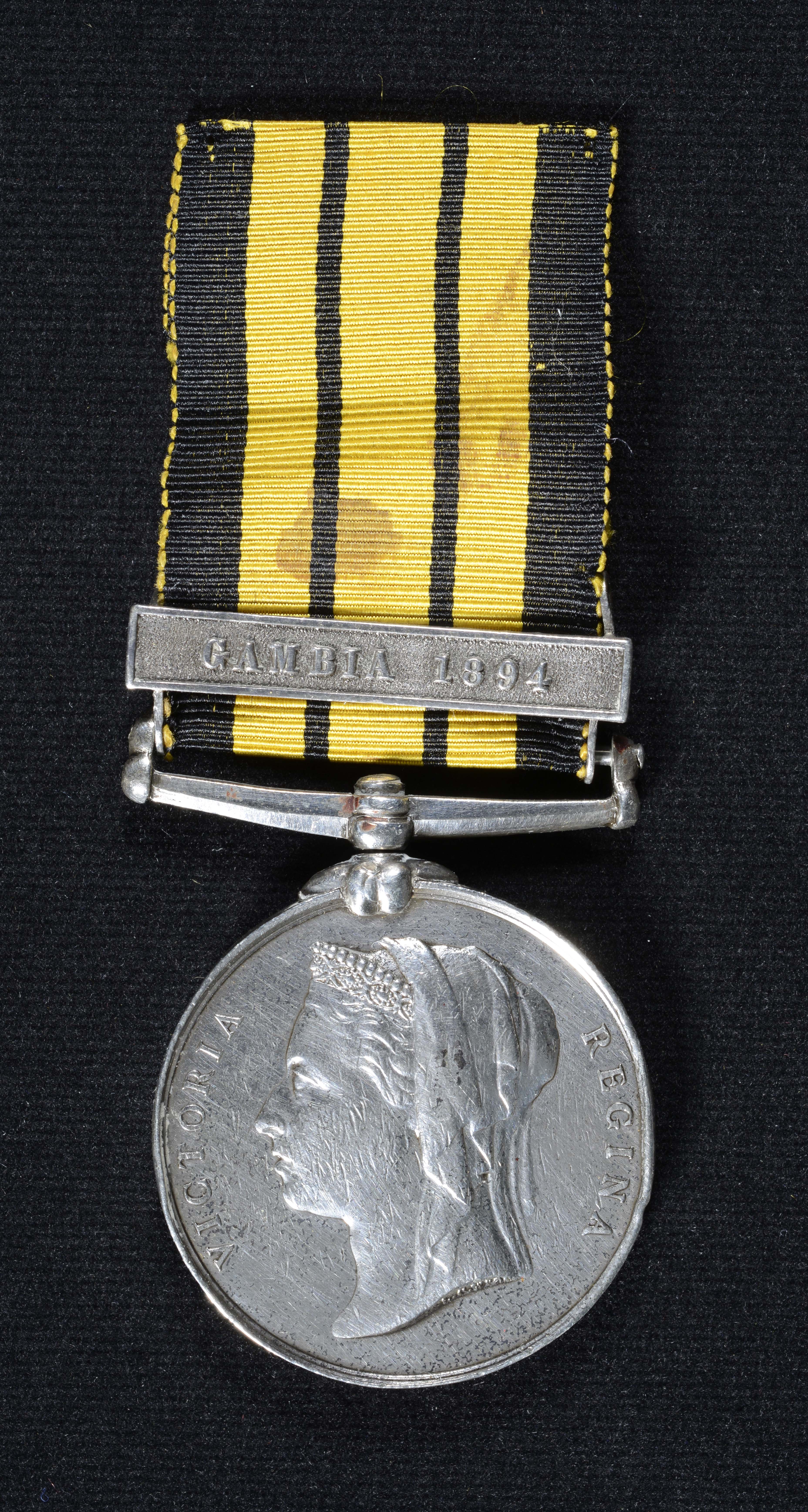
A campaign medal awarded for participation in minor campaigns that took place in East and West Africa between 1887 and 1900. A total of 21 clasps were awarded. The ribbon is yellow with black edges and two black stripes towards the centre.
The 1914-1915 Star
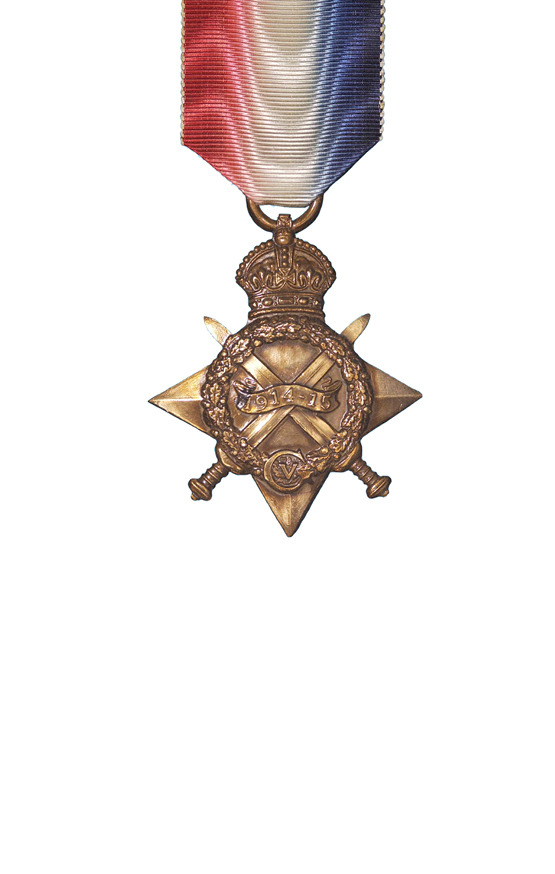
The 1914-15 Star was awarded to servicemen and servicewomen who served in the First World War between 5 August 1914 and 31 December 1915 in any “theatre of war”, provided they had not qualified for the 1914 Star. This included service at Gallipoli between 25 April 1915 and 31 December 1915, service in Egypt between 5 November 1914 and 31 December 1915, and service during the capture of German Samoa on 29 August 1914. Those eligible for the medal must have “served on the establishment of a unit in a theatre of war” during the relevant dates of operations in that area. The ribbon’s red, white and blue shaded and watered bands represent the flag of the United Kingdom.
The British War Medal
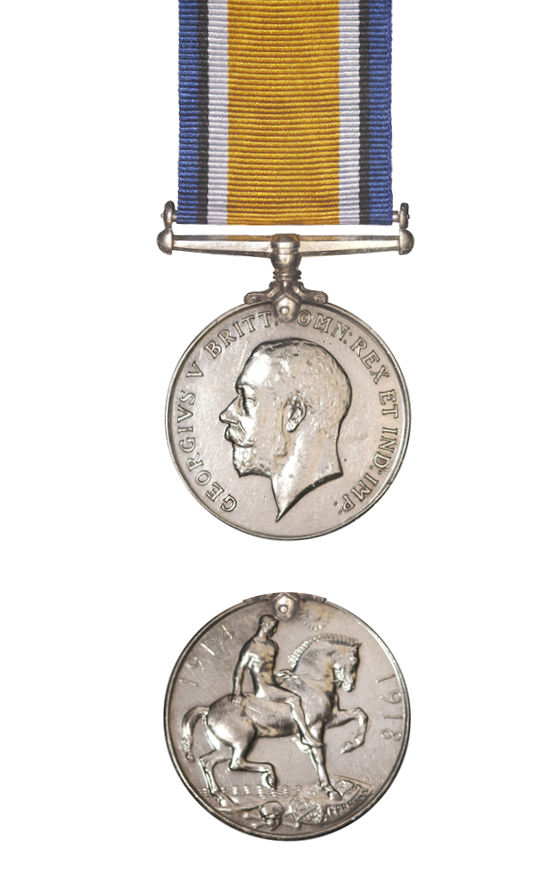
The British War Medal was instituted in 1919 to recognise the successful conclusion of the First World War (1914-1918). Its coverage was later extended to recognise service until 1920, recognising mine clearing operations at sea, and participation in operations in North and South Russia, the eastern Baltic, Siberia, the Black Sea and the Caspian Sea.
The Victory Medal
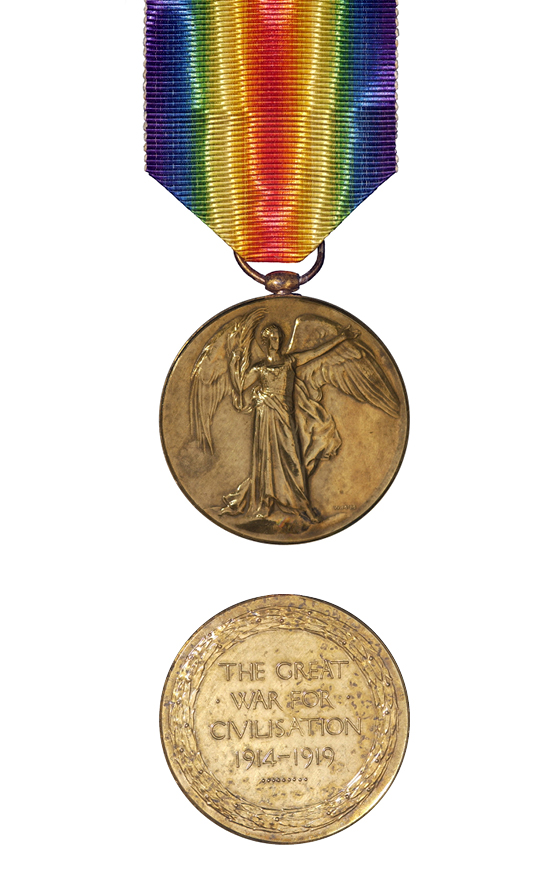
The Victory Medal was awarded in the First World War to all those who had already qualified for the 1914 Star or the 1914-15 Star, and to most persons who had already qualified for the British War Medal. The Victory Medal was awarded to all New Zealand troops serving overseas, except for those who arrived in Samoa after 30 August 1914 and those serving in Great Britain only. It has a unique double rainbow ribbon.
A bronze spray of oak leaves on the medal ribbon denotes that the recipient was Mentioned in Despatches during the period that the medal recognises. To be Mentioned in Despatches a member of the armed forces has had their name mentioned in an official report, written by a superior officer, and sent to a higher command. The report would describe the individual’s gallant or meritorious action in the face of the enemy.
Royal Naval Long Service and Good Conduct Medal
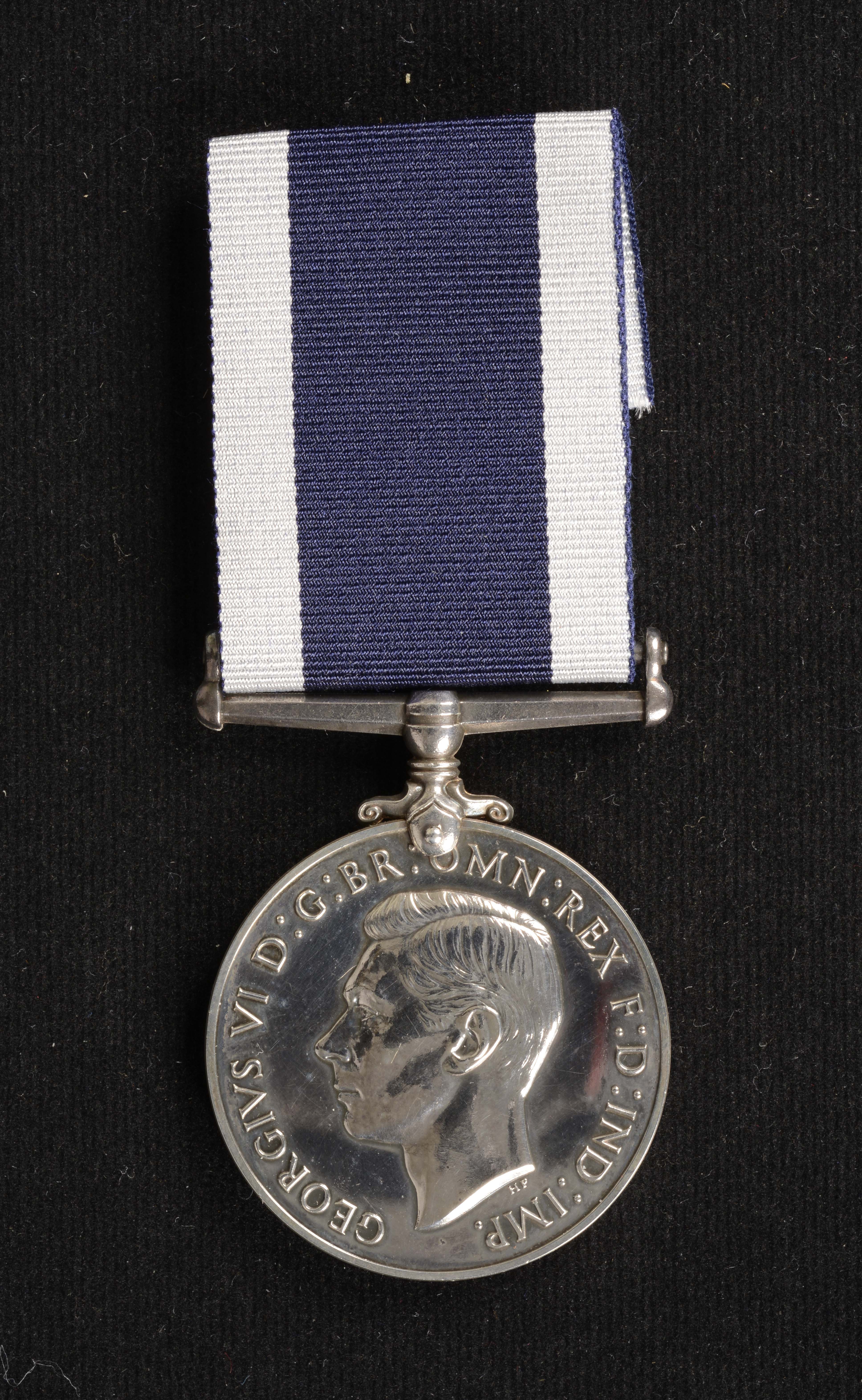
Awarded to ratings who have served a minimum of 15 years in the Royal Navy (previously 21 or 10 years), the first version of this medal was instituted in 1831 and it is still issued to Royal Navy personnel today. It features the reigning monarch’s head on the obverse and HMS Victory on the reverse with the recipient’s details engraved or impressed on the edge of the medal. This medal was also issued to eligible personnel serving in the New Zealand Division of the Royal Navy from 1921-1941 and then to Royal New Zealand Navy personnel from 1941-1981. In 1985 a New Zealand Royal Navy Long Service and Good Conduct Medal was introduced bearing the exact same design.
Cross of St George
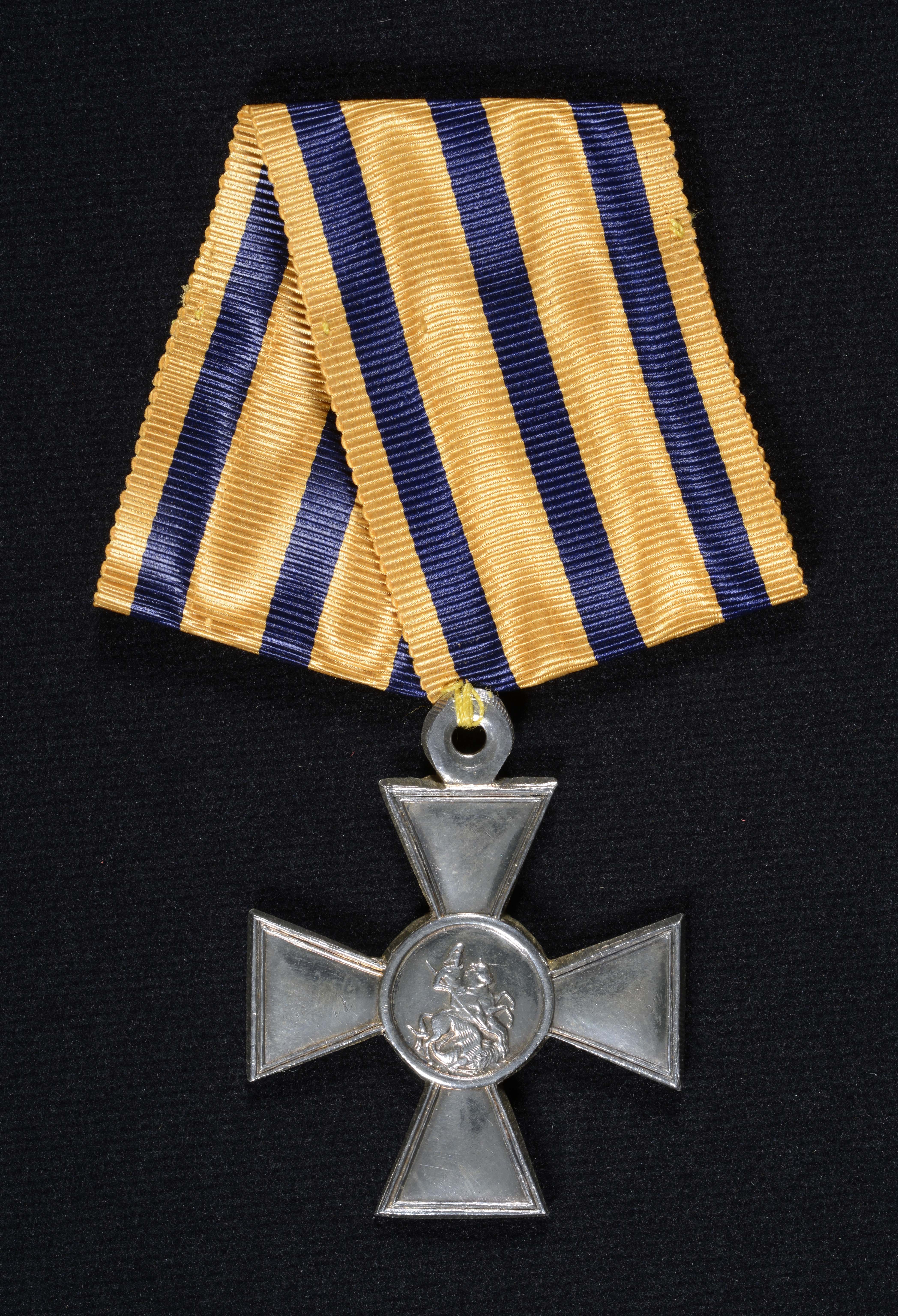
A state decoration of the Russian Federation awarded to soldiers, sailors, sergeants, petty officers, warrant officers and junior officers for deeds and distinction in battle in defence of the Fatherland. It is also awarded for deeds and distinction in battle on the territory of other states, while maintaining or restoring international peace and security, with recognised instances of courage, dedication, and military skill.

